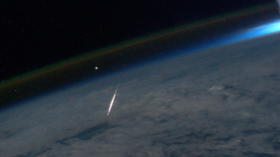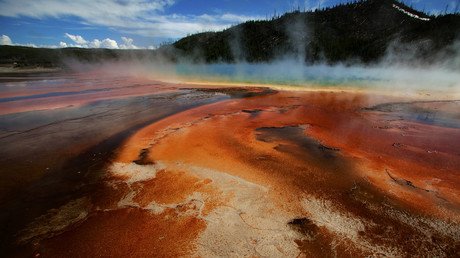Perseids meteor shower to peak Monday night with stunning FIREBALL displays

It’s that time of year again, when the spectacular Perseid meteor shower rains fire across the night sky. The days-long fireball fiesta is expected to peak this evening with an estimated 80 shooting stars per hour at its height.
Widely seen as one of the most entertaining celestial events of the year, the Perseids meteor shower is caused by meteoroids from the debris trail of the Comet 109P/Swift-Tuttle which orbits the sun once every 133 years.
Those in the Northern Hemisphere will be treated to the best views, provided they can escape the light pollution from towns and cities. The moon will frustrate proceedings somewhat as a full moon is due on Thursday, meaning the sky will likely be washed out for the majority of viewers, but fear not, as the Perseids have an ace up their sleeve.
Instead of shooting stars, stargazers can hunt for bright ‘fireballs’ which can last up to a second rather than merely fractions of a second like their shooting star brethren.
“...[T]he Perseids are rich in bright meteors and fireballs, so it will still be worth going out in the early morning to catch some of nature's fireworks,” NASA says.
Also on rt.com Great Pyramid-sized ‘potentially hazardous’ asteroid traveling towards EarthDespite the lunar interference, the shower will still be surprisingly visible across the world given the moon's relatively low position in the southern sky due to the Earth's tilt.
The Perseids come from the direction of the constellation Perseus (hence the name), and for best viewing the advice is, as always, to stand anywhere with as limited light pollution as you can manage with your back to the moon, looking north or east.
Also on rt.com Comet me, bro! What are your chances of finding a crashed meteorite on Earth?If you can resist the temptation to check your phone for between 30 and 60 minutes, you're likely to see some phenomenal cosmic firecrackers streaking across the sky from about 10pm until just before sunrise in your local time zone.
The meteor shower is expected to last until August 24 and will take place at the same time every night this week, but with diminishing returns as we approach Thursday's full moon.
For those who can’t make it outside, NASA is running a live camera feed from Alabama starting around 6pm PT on August 12 as is the Virtual Telescope Project in Europe from 3pm PT.
Like this story? Share it with a friend!














